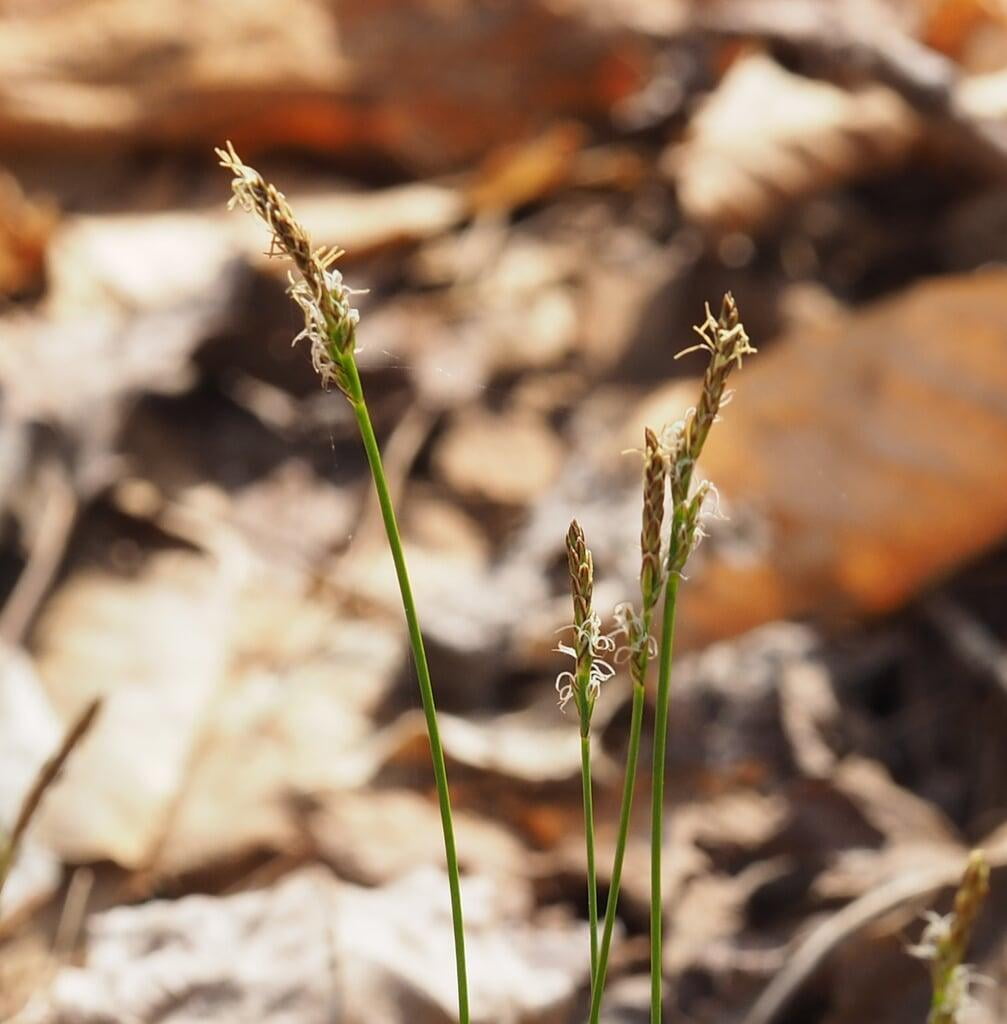Carex pensylvanica
Pennsylvania sedge Description:
Carex pensylvanica, commonly known as Pennsylvania sedge, is a perennial plant species that belongs to the family Cyperaceae. It is native to eastern North America and can be found growing in dry woodlands, rocky areas, and other well-drained soils.
The plant typically grows to a height of 4-18 inches and has a clumping growth habit with narrow, grass-like leaves that are dark green in color. The leaves are typically 1/8 inch wide and have a fine texture. The stem of the plant is triangular in shape and can range in color from green to brown.
In late spring to early summer, Carex pensylvanica produces small, inconspicuous flowers on spikelets that are held above the foliage. The flowers are typically brownish in color and are wind-pollinated. The plant then produces small, brown seeds that are dispersed by the wind.
Carex pensylvanica is a popular plant for use in dry shade and woodland gardens, where it provides a low-maintenance groundcover that is tolerant of a wide range of soil types. The plant is also used as a lawn alternative in some areas, as it requires little mowing or watering. Carex pensylvanica is an important component of natural ecosystems, providing food and habitat for a variety of wildlife species, including birds, insects, and small mammals. The plant is also useful for erosion control and soil stabilization, making it a valuable addition to landscaping projects. Additionally, Carex pensylvanica is known for its resistance to deer browsing, making it a good choice for gardens in areas with high deer populations.
Native Range:
Pennsylvania sedge is found across the state of Minnesota. More broadly, Pennsylvania sedge can be found in the Upper Midwest to the East coast. From North Dakota to Georgia.
Standard Plant Information:
Plant height: 4" - 18" inches
Bloom time: May - June
Preferred habitat: Does well in part shade to sun with dry to average soils. Often found in woods, woodland edges, and savannas.
Sowing:
For most homeowners, the best option is to scatter seed on the ground by hand broadcasting at a minimum of 15-16 pls lbs per acre. For even coverage, we recommend that you broadcast seed in perpendicular rows across the site to ensure even coverage.
Planting:
Simply dig a hole in the soil slightly larger than the plant’s roots. Ensure that the soil line of the plant is maintained during the transfer (i.e. the plant should be at the same level with the ground as it was in the pot). Pack any loose dirt back around the plant and make sure you water it well the same day to ensure it has the best chance of survival.












